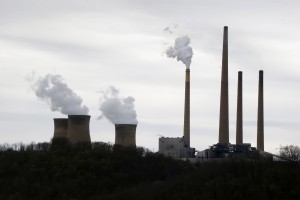House panel examines how Obama’s climate plan will affect Pennsylvania
-
Marie Cusick
A state House committee is looking into how newly proposed federal rules to combat climate change will affect Pennsylvania’s energy industries.
The House Environmental Resources and Energy Committee held a hearing today to discuss newly proposed rules from the federal Environmental Protection Agency.
The overall goal is a 30 percent reduction in emissions nationwide by the year 2030. States will be directed to craft plans to meet their own specific targets.
Pennsylvania will be required to cut its greenhouse gas emissions by 32 percent over the next 15 years.
The federal climate policies will mean major changes for the state’s energy industries. Pennsylvania ranks fourth in the nation for coal production and third for carbon dioxide emissions.
Former state senator and current Pennsylvania Coal Alliance CEO John Pippy testified first, noting that the state currently gets 40 percent of its electricity from coal.
He believes the newly proposed rules are one of the biggest obstacles to continued coal use the industry has faced in decades and views it as an attempt to eliminate coal entirely.
“It would be great if [the EPA] specifically said, ‘no coal’ because then, at least it would be out there,” he told the committee.
Representative Pam Snyder (D- Greene) is also worried about what the new policies will do to her district, which relies heavily on the coal industry.
“If we’re going to eliminate coal completely, what do you think will happen to electricity rates? People are going to be shocked when they go to their mailboxes. I believe that wholeheartedly,” she says.
Snyder is backing a bill that would require legislative approval of the state’s climate plan. HB 2354 passed the House in July and is currently in a Senate committee.
Representative Greg Vitali (D- Delaware), a vocal environmental advocate, pointed out scientists have been issuing dire warnings for years about how greenhouse gases threaten the planet, and the state has flexibility in how it meets the target.
“That 30 percent number might be something we don’t like, but it’s driven by sound science,” he said. “This plan doesn’t assume Pennsylvania has to solve the entire planet’s climate, but we do have to do our part.”

















